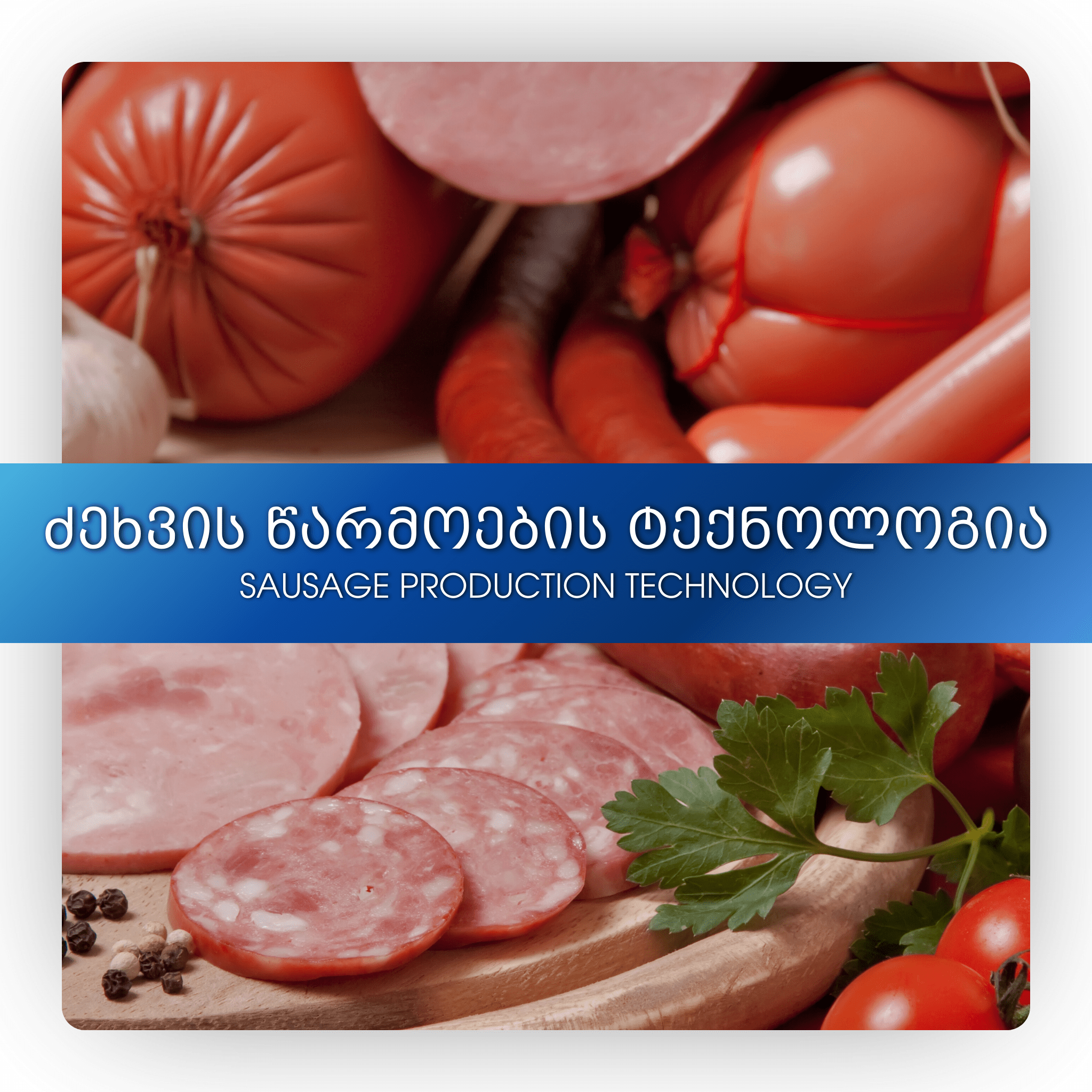Sausage Production Technology
Today, there are many types and assortments of sausages on the market, the technological schemes of which are individual and specific, although the main production stages are still common.
Making any type of sausage begins with the preparation of basic raw materials and auxiliary materials.
The main stages of sausage production are:
Tenderization of meat: the preparation of raw materials means the selection of meat, its softening and sorting of the pulp. Tenderization is the removal of the soft tissues of the flesh from the bone. For this, the flesh is divided into natural anatomical parts. Cut the beef into 5 (7) pieces; Cut the pork into 4 (5) pieces; Cut the lamb into 4 pieces.
Exudation: The pulp freed from the bone still contains the rough connective tissues: cartilage, tendons, ligaments, and large blood vessels. Because of this, it is necessary to extract it. Draining is the removal of coarse connective tissues and subcutaneous fat from the pulp and sorting of the meat for making sausages. Residues obtained by extracting pulp from all species of animals are used to make laba, as well as food supplements for animals.
Shredding: the drained-sorted pulp is cut with a knife or crushed on a grater, taking into account the quality, salted and transferred to storage for ripening. During the production of various assortments of sausages, depending on the specifics of the product, salt is added to the meat. Salt protects the meat from spoilage, and it also ensures the formation of all the necessary properties for sausage mince. Sodium nitrite is added to the meat/mince along with salt in the form of an aqueous solution. The meat/mince is mixed well to distribute the salt well throughout the mass. The salted meat is transferred to a wooden, stainless metal or polymer tray or tray and placed in the refrigerator for ripening.
Secondary Shredding: The matured meat is shredded a second time in a cutter before being mixed. Depending on the specifics of the sausage, the minced meat is chopped into different sizes.
Mince Mixing In the cutter, the meat/mince of the corresponding meat is first loaded, and all additives, spices are added here. Thus, the preparation of the mince is made here, that is, the corresponding components of the recipe are mixed. The paste can be mixed in a mixer, where the main raw materials and auxiliary materials are loaded in the order described above.
Injecting the slurry: the mixed slurry is transferred to the syringe, where it is pumped into the casing under pressure (ie, the slurry is formed). On the other hand, the casing filled with minced meat is divided into portions. Cannabis is used for this. To give strength, coils are also made with hemp on the surface of the bowl.
Settling: The bound portions are then hung and delayed for settling. Sitting is called the delay of the formed sausage in the final position before heat treatment, which aims to dry the casing, complete the ripening of the meat and strengthen it as a result of the formation of secondary structures. The operation of setting the sausage is completed in a special chamber at a temperature of 0-2°C and a relative humidity of 78-85%. This operation can be performed on the end of the workshop - when moving from the spraying area to the tanning area. The duration of sitting for different assortment of sausages varies from 2-6 hours to 5-7 days and nights.
Browning: is the treatment of the sausage surface at a temperature of +70-120°C in the environment of smoke gases. Sausage and sardines, as well as cooked and semi-smoked sausages are fried, during which their surface hardens and acquires a pleasant reddish-brown color. In addition, the bole gases give the sausage a light smoky aroma and taste. The duration of browning depends on the type of sausage.
Cooking/boiling: The goal is to bring the sausage to an edible state. The sausage is considered cooked when the temperature in the central layer of the mince reaches +68-72°C. To reach such a temperature, sausages of different diameters need different time, from 15-20 minutes to 120-150 minutes.
Smoking: together with table salt and drying, it enhances the bacteriostatic properties of the sausage. In addition, the substances contained in the bol give the sausage a very attractive taste and aroma, as well as change the color of the surface and the mince.
Two methods of smoking:
◾️ During hot smoking, the air temperature in the smoking chamber is +35-50°C. When smoking hot, it is 12-48 (72) hours.
◾️ Cold smoking should be within +18-22°C. Cold smoking for 3-5 days (up to 7 days).
Cooling: Sausages processed at high temperatures are cooled in a suspended state, which reduces "losses" and preserves the finished product for a long time.
The duration of cooling depends on the diameter of the sausage and the cooling method. There are two cooling methods, water cooling and air cooling.
Drying: its purpose is to achieve conditioned moisture in finished products. The drying time depends on the initial moisture content of the sausage. The sausages are dried in a hanging state in a special chamber equipped with air conditioners and several tiers of hanging roads. The air temperature in the drying chamber should not exceed +12°C, and the relative humidity should not exceed 75%.
Storage and packaging: The purpose of the regime protection is to extend the shelf life of finished products and to preserve their appearance.
When sending for sale, sausages are wrapped or packed in a wooden, stainless metal or polymer container (box), in which paper is pre-lined. It is possible to extend the shelf life by packing the product in a polymer bag under vacuum conditions. The shelf life of cooked sausages packed in this way is 8-9 days.
